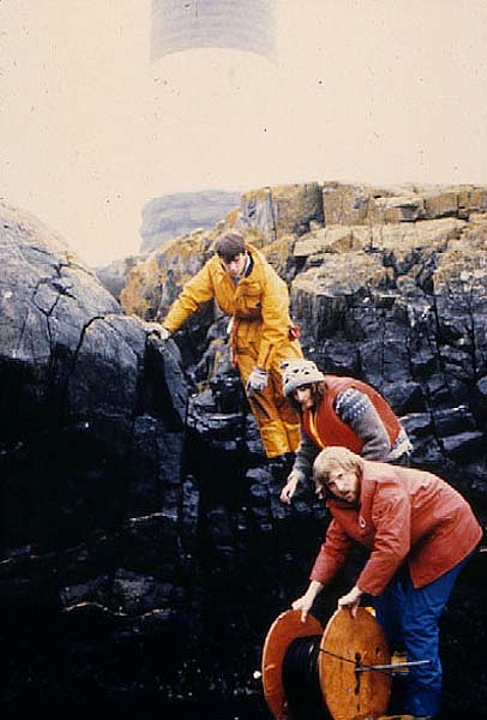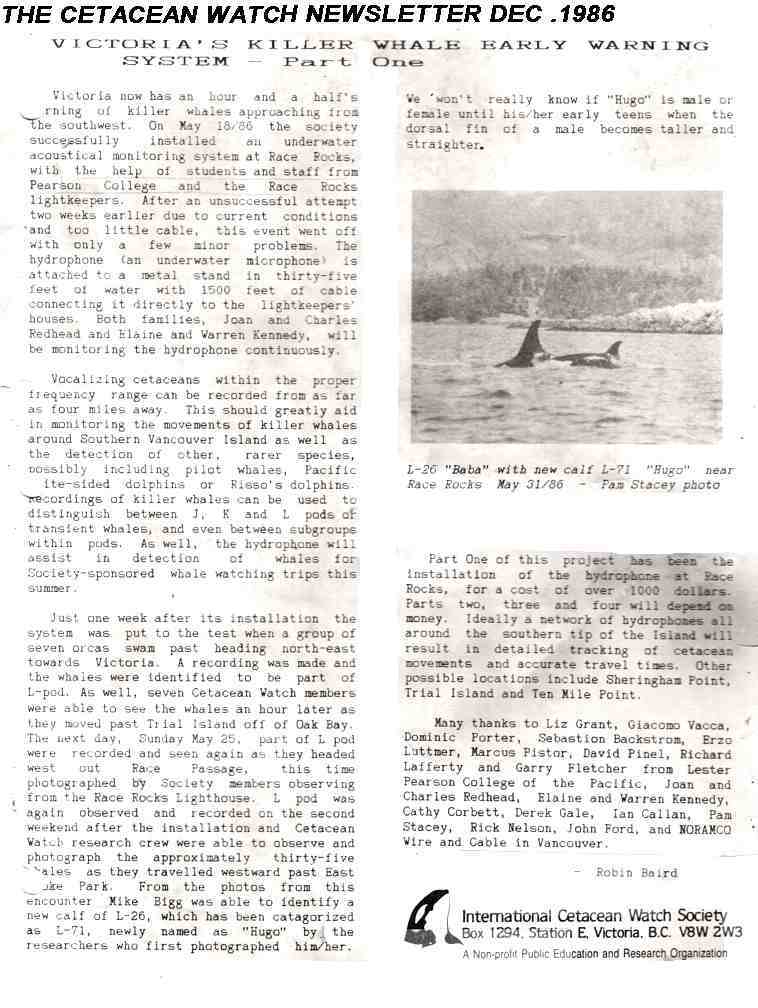By Robin Baird –From The Cetacean Watch Newsletter , Dec 1986.
A discussion of Victoria’s Killer whale early warning system, and the installation of the first hydrophone at Race Rocks.
Tag Archives: whale
Social organization of mammal-eating killer whales: group stability and dispersal patterns
by Robin W. Baird and Hal Whitehead
See the full PDF:KWSocOrg
Abstract
: The social organization of mammal-eating “transient” killer whales (Orcinus orca) was studied off southern Vancouver Island from 1985 through 1996. Strong and long-term associations exist between individual transients, so sets of individuals with consistently high association levels, termed pods, can be delineated. Pods consist of individuals of mixed ages and sexes, and typically contain an adult female and one or two offspring (averaging 2.4 individuals). The mother–offspring bond remains strong into adulthood for some male (and less often for female) offspring. Other males disperse from their maternal pod and appear to become “roving” males, spending some of their time alone, and occasionally associating with groups that contain potentially reproductive females. These males appear to have no strong or long-term relationships with any individuals, and adult male – adult male associations occur significantly less often than expected by chance. Females that disperse from their natal pod appear to be gregarious (having high average association rates) but socially mobile (having low maximum association rates). Differences in social organization from the sympatric fish-eating “resident” killer whales (where no dispersal of either sex occurs) likely relate to differences in foraging ecology. Transient killer whales maximize per capita energy intake by foraging in groups of three individuals,whereas no such relationship has been documented for resident killer whales


